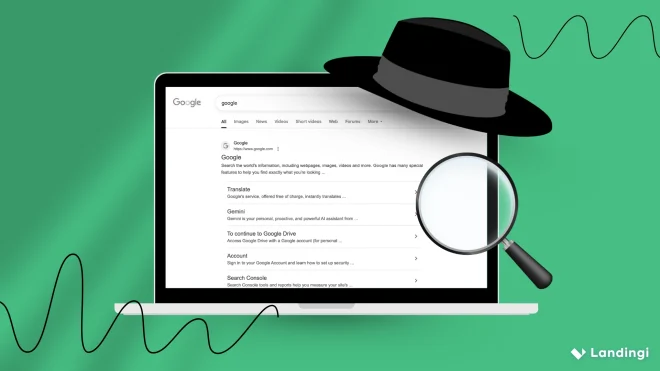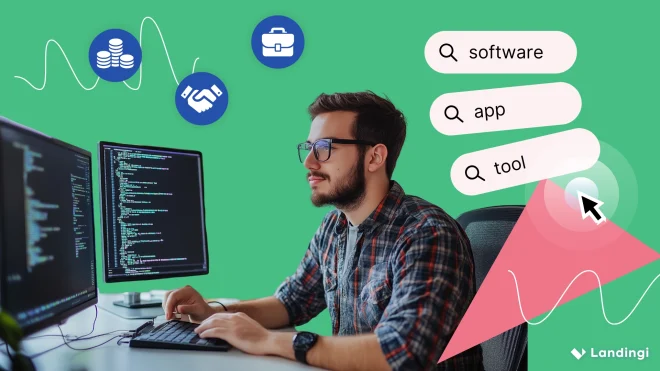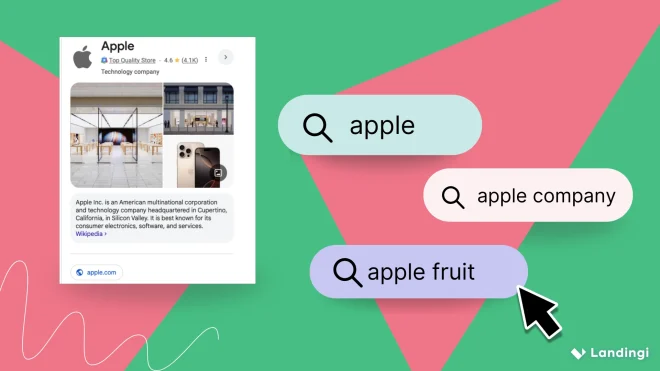Off-page SEO (Search Engine Optimization) refers to everything you do outside your own website to improve its position in search engine results pages (SERPs). While on-page SEO focuses on optimizing elements within your site, like meta tags, internal linking, and relevant content, off-page SEO is all about boosting your website’s authority, reputation, and search visibility through external signals.
This includes tactics like link building, guest posting, gaining brand mentions, earning quality backlinks, or optimizing your Google Business Profile. These efforts—often called off-site SEO—are at the heart of effective off page SEO optimization. They send signals to search engines that your content is valuable, trustworthy, and worth displaying higher in the search engine results pages.
And it works: according to a 2024 analysis by Backlinko, pages ranking #1 on Google have 3.8 times more backlinks than those in positions 2–10. But it’s not just about quantity—Google prioritizes quality and relevance. A single high-authority link from the right source can do more than dozens of low-value mentions. That’s why smart off site SEO optimization is more important than ever.
So, stick around. We’ll break down proven off page SEO techniques, show you how to track performance, and spill what actually works in 2025.

What Is Off-Page SEO in Google?
Off-page SEO is a set of practices improving a website’s position in search engine results pages (SERPs) by building its authority, trust, and reputation—outside of the website itself.
Also known as off-site SEO, it focuses on what others say about your site, not what’s published on it. When someone links to your page, mentions your brand on social media, or writes about you in a blog post—that’s off-page SEO in action.
Example: Let’s say you just launched a blog post about local SEO tips. You’ve optimized your meta tags, the content’s airtight, and your internal links are solid. Great—but so have a thousand other marketers. What actually helps your post climb the search engine results pages?
- Backlinks from authoritative websites.
- Mentions on news sites.
- Shares on social media platforms.
- Maybe a few branded searches from people looking you up by name.
In 2025, these signals matter more than ever. Google’s core updates have leaned heavily on trust-based ranking factors: E-E-A-T, domain authority, referral traffic, and yes, good old-fashioned quality links. If Google sees you getting attention from relevant sites, people tweeting about your article, or bloggers linking back to your research, it assumes you’re doing right.
There’s more to it than links. Think online reputation, Google Business Profile optimization, digital PR, and even unlinked brand mentions—Google tracks them all. All of these signals help show that your website is active, trusted, and part of the wider conversation in your industry.
Make every backlink count by sending traffic to landing pages that convert—build them fast with Landingi.
Why Is Off-Page SEO Important?
Off-page SEO is important because it directly affects how Google ranks your site by measuring external trust signals. Without them, your site lacks the authority, credibility, and relevance that Google uses to decide which results deserve top positions. Even perfectly optimized content can stay buried if it’s not backed by off-site validation.
Google’s algorithm doesn’t just analyze your content—it listens to the internet’s opinion of you. If other websites are linking to you, people are searching for your brand by name, or your business is being mentioned in articles and reviews, that tells Google: this site is worth showing.
Think about how you decide what to read or buy. You don’t just trust what the company says—you check ratings, reviews, and what other people are saying. Google does the same. It looks at quality backlinks, social media engagement, brand mentions, and referral traffic from authoritative websites. All of these are off page SEO signals that influence how your site performs in search.
Off-page signals—like quality backlinks, social media engagement, and referrals from relevant websites—help Google measure credibility, authority, and popularity.
They also give your site context. When respected websites in your industry mention you or link to your content, it tells Google what topics you cover and who you serve. That makes it easier for search engines to match your pages with the right search queries. The result: more visibility, stronger rankings, and better chances of reaching the right audience.
Build landing pages that convert the traffic your off-site SEO brings in. Try it with Landingi.
What Is the Difference Between Off-Page and On-Page SEO?
The difference between on-page and off-page SEO lies in where the optimization happens and what kind of ranking signals it sends to Google. On-page SEO includes everything you can directly control on your website—structure, content, HTML, and performance. Off-page SEO is everything that happens beyond your site—external signals like backlinks, mentions, and social proof that influence how search engines perceive your site’s authority and trustworthiness.
To simplify:
On-page SEO makes your site relevant. Off-page SEO makes it credible.
The two are deeply connected but work in different ways. On-page optimizations help Google understand what your content is about and how well it meets search intent. Off-page efforts, on the other hand, help Google determine whether others trust you enough to recommend your content in the top search results.
On-Page SEO covers things like:
- Site content
- Keyword usage
- Title tags, meta descriptions, headers
- Internal linking and URL structure
- Image optimization
- Page speed, mobile usability, and Core Web Vitals
- Schema markup and featured snippets
These elements help search engines crawl, index, and rank your pages accurately. They’re measurable, fixable, and within your control.
Off-Page SEO, in contrast, includes:
- Link building
- Content marketing and guest posting
- Local SEO efforts (e.g. Google Business Profile)
- Social media signals and influencer marketing
- Online reviews, PR, and brand mentions
These are signals from other websites and external platforms that tell search engines you’re worth trusting and recommending. Unlike on-page, they’re harder to influence directly—but often more powerful in the long run.
| Aspect | On-Page SEO | Off-Page SEO |
|---|---|---|
| Location | On your website | Outside your website |
| Control | Full control | Limited control |
| Main Focus | Content, structure, technical optimization | Authority, trust, and reputation |
| Key Elements | Keywords, meta tags, internal links, page speed | Backlinks, social signals, brand mentions |
| Goal | Improve page relevance and user experience | Build domain authority and trustworthiness |
| Results Timeline | Weeks | Months |
How to Improve Off-Page SEO?
To improve off-page SEO, focus on building trust signals outside your website—links, mentions, reviews, and engagement that prove your content is valuable beyond your own domain. These external cues help search engines assess your site’s authority, making it more likely to appear in competitive search results.
Start by auditing where you stand. Use tools like Google Search Console, Ahrefs, or Semrush to analyze your backlink profile, referring domains, and brand mentions. Look at the quality of your links, not just the quantity. Are they coming from relevant, high-authority sources? If not, that’s your first fix.
Once you know your baseline, define a clear goal. Are you trying to build topical authority in a niche? Strengthen your brand visibility? Improve local rankings? Your strategy should match your goal. Local SEO requires a different approach than building backlinks for an ecommerce brand or SaaS platform.
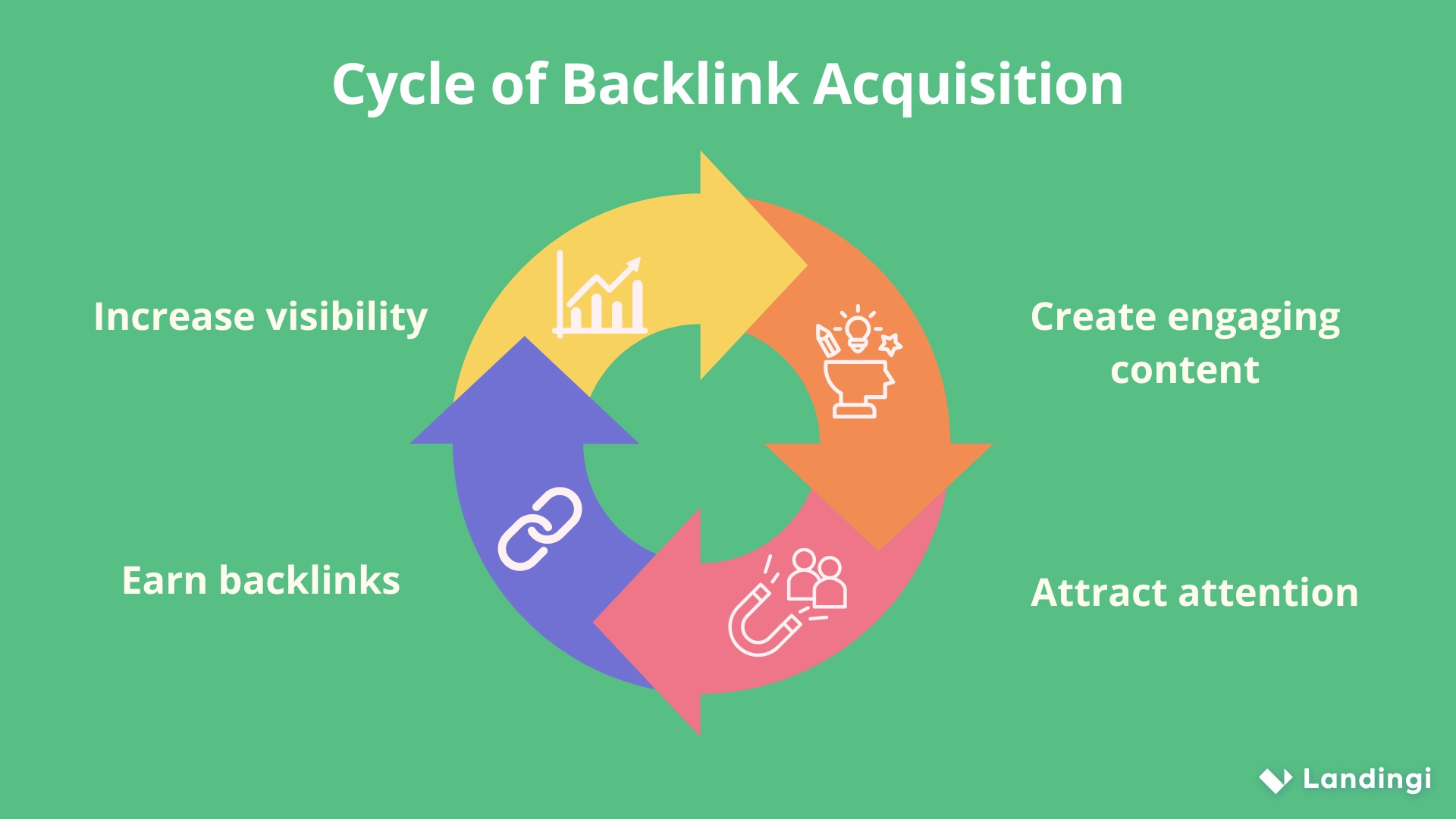
Think long-term. Off-page SEO rewards consistency. Instead of chasing dozens of random links, focus on building relationships with trusted publishers, journalists, and communities in your space. One strong link from a respected site can have more impact than fifty low-value ones.
Make sure your content earns attention. The best way to attract organic backlinks is to publish something worth referencing—original data, expert commentary, or helpful resources. When your content solves problems or adds real value, links come naturally.
Pro tip: Set up Google Alerts for your brand name, product names, and key team members. You’ll be notified anytime someone mentions you online—and that’s your window to turn unlinked mentions into backlinks.
Track your progress regularly. Use SEO tools to see which links are sending traffic, which pages are attracting mentions, and how your domain authority is changing over time. Let the data guide your next steps.
Pair your off-site efforts with landing pages optimized for action—Landingi makes it easy.
15 Working Off-Page SEO Techniques
There are plenty of off-page SEO tactics out there, but not all of them are still effective in 2025. The 15 techniques below are the ones that actually make a difference. Some are classics, others are underused. All of them help build authority, earn trust, and improve your search rankings—if you use them right.
#1 Earn Backlinks Through Irresistible Content
This is the foundation of all off-page SEO. Your content becomes naturally linkable if it is valuable, original, and useful. People reference it because it helps them (or because they take advantage of it), not because you asked them to.
Tip: Make your content better than what’s already ranking—more current, more detailed, or more visual.
Example: Turn your original research or expert guide into a well-designed article. Share it across channels and pitch it to bloggers as a source.
#2 Convert Brand Mentions Into Links
When people mention your brand without linking to your site, that’s a missed opportunity. These mentions already show trust—turning them into backlinks is low-hanging fruit.
Tip: Use tools like Google Alerts, Ahrefs, or Brand24 to track unlinked mentions.
Example: Spot a blog post that praises your product but doesn’t link to you. Reach out with a simple “Hey, thanks! Mind linking to our homepage?”—it often works.
#3 Write for Other People’s Audiences
Guest blogging is still effective when done with care. Publishing on relevant, trusted websites gives you backlinks and exposure to new readers.
Tip: Pitch content that adds real value to their audience—not thin, keyword-stuffed fluff.
Example: Write a thought piece for a niche SaaS blog, include real data and examples, and earn a contextual link to a related article on your site.
#4 Use Broken Link Building
Find outdated or broken links on reputable websites, then suggest your content as a replacement. It’s helpful, non-pushy outreach that actually solves a problem.
Tip: Look for 404 errors on industry blogs using tools like Check My Links or Ahrefs.
Example: If a high-authority site links to a dead stats page you’ve updated, offer yours instead. It’s a win for them—and you.
#5 Partner with Micro-Influencers
You don’t need celebrity endorsements. Influencers with smaller but focused audiences often drive more engagement and backlinks.
Tip: Focus on relevance over reach—people with real credibility in your niche.
Example: A niche marketing expert features your tool in a post or newsletter. You earn trust, traffic, and possibly a few organic links.
#6 Optimize Your Google Business Profile
For local businesses, this is essential. Your Google Business Profile impacts how you show up in local packs, maps, and even organic results.
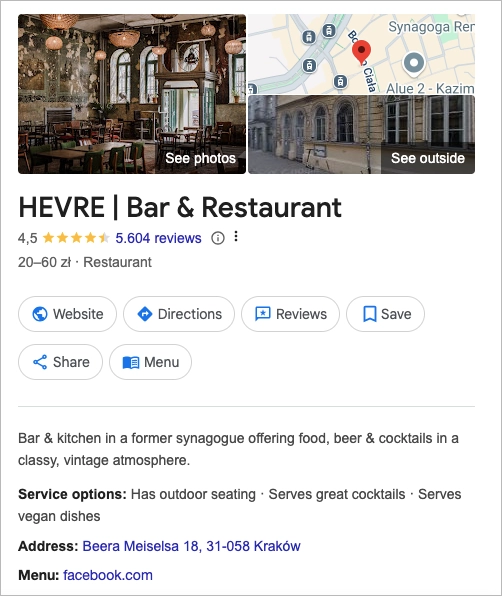
Tip: Add high-quality photos, keep hours and contact info updated, and respond to reviews.
Example: A restaurant that optimizes its profile with menu links, location details, and fresh photos consistently outranks less-active competitors.
#7 Share Content on Social Platforms That Matter
Social signals aren’t direct ranking factors, but they help amplify your content, increase visibility, and attract organic backlinks.
Tip: Adapt your post format to each platform—short threads for Twitter, carousels for LinkedIn, reels or stories for Instagram.
Example: A viral LinkedIn post referencing your blog can earn hundreds of views—and a few strong links from people who discovered your brand there.
#8 Answer Questions in Public Forums
Q&A sites and industry communities let you demonstrate authority and link to your content when it’s helpful.
Tip: Focus on adding value—don’t just drop links. Build a profile over time.
Example: A thoughtful answer on Quora or Reddit, with a natural link to your blog post, drives consistent referral traffic over months.
#9 Design Visuals People Want to Share
Infographics and data visualizations can attract natural backlinks—especially from bloggers, journalists, and educators.
Tip: Solve a problem visually. Make it embeddable and easy to reference.
Example: A timeline graphic of Google algorithm updates gets picked up in newsletters and SEO roundup posts.
#10 Get Listed in Legit Directories
Directories still matter when they’re curated, trusted, and relevant. These citations help with visibility and authority—especially for local SEO.
Tip: Avoid spammy lists. Stick to high-quality platforms like Clutch, Yelp, or niche industry indexes.
Example: A digital agency listed in Clutch gets discovered by journalists looking for sources—link + exposure.
#11 Republish Smartly (Content Syndication)
Syndicating your content on established platforms helps reach new audiences and builds visibility—if done right.
Tip: Always link back to the original piece and include a canonical tag if possible.
Example: Republish a blog post on Medium with a link to the full version. New eyes, new shares, potential backlinks.
#12 Host or Join Digital Events
Webinars, interviews, and virtual panels build credibility—and earn links from promotional pages and recaps.
Tip: Team up with partners or influencers to co-host and cross-promote.
Example: A co-branded webinar gets listed on event sites, shared in newsletters, and mentioned on partner blogs.
#13 Publish Videos with SEO in Mind
Video content can rank on its own, generate traffic, and reinforce your other SEO efforts.
Tip: Add keyword-rich descriptions and include a link to your site in the first lines.
Example: A how-to video on YouTube includes a link to your product page—great for both discovery and traffic.
#14 Be Part of Expert Roundups
Expert roundups let you contribute a quote or tip—and usually earn you a backlink in return.
Tip: Use platforms like HARO or X to find calls for contributors.
Example: A quote in a “Top 10 Marketing Trends” article gets you featured (and linked) alongside bigger brands.
#15 Engage Authentically in Niche Communities
Being active in private Slack groups, Facebook groups, or Discord servers can drive mentions, links, and real connections.
Tip: Focus on consistency. Be helpful, not self-promotional.
Example: You help someone troubleshoot a problem in a private group. Later, they cite your guide in a blog post—because they trust you.
How to Perform an Off-Page SEO Audit?
To perform an off-page SEO audit, you need to evaluate how your website is represented beyond your own domain. It’s a deep look at the external signals—links, mentions, engagement, reviews—that shape your reputation in the eyes of search engines.
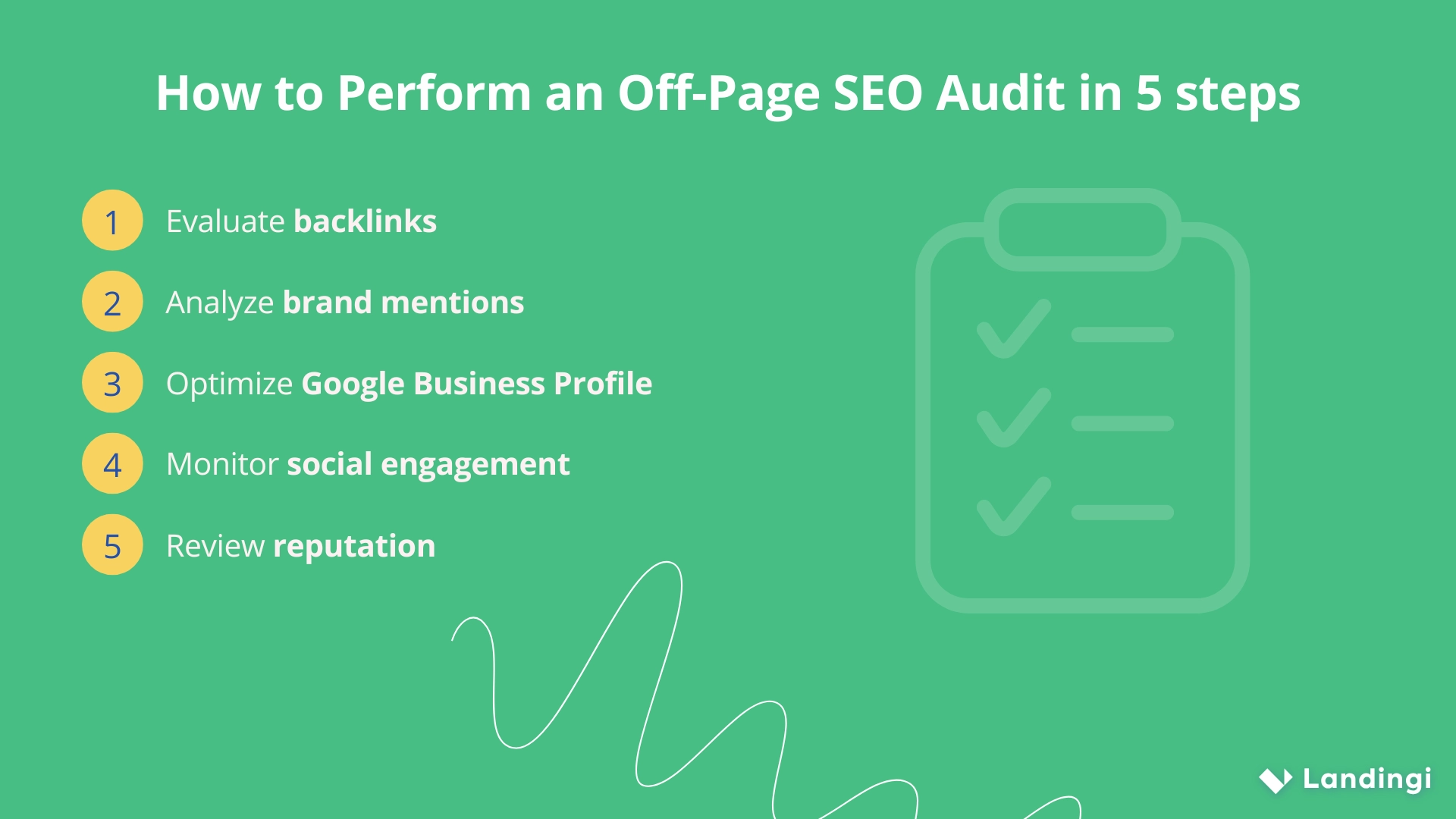
Start with your backlinks. Who’s linking to you, and does it even matter? Use Ahrefs or Semrush to dig in. The goal isn’t just to count links—it’s to understand their quality. Are they from trusted, relevant sources? Are they helping your most important pages rank? If you’re getting tons of links but nothing’s moving, that’s a red flag.
Then take a look at brand mentions. It’s surprising how often companies get talked about without being linked. Tools like Google Alerts or Brand24 can show you where your name pops up—then you can decide which of those mentions are worth turning into links. It’s one of the lowest-effort, highest-reward parts of this whole process.
And don’t forget your Google Business Profile. If you serve a local audience and your profile is half-filled or outdated, you’re leaving real visibility on the table. Make sure everything is accurate, complete, and aligned with the rest of your online presence. Bonus: Google loves fresh photos and active review responses.
Now ask: what’s happening socially? Are people sharing your content, tagging your brand, engaging with what you put out there? While social activity isn’t a direct ranking factor, it plays a huge role in link discovery and branded searches. A post that gains traction often leads to mentions you didn’t expect.
Your reviews deserve a close look, too. Not just the rating—but the language, the platforms, the frequency. If you’re in a competitive space, reputation can make or break you in the eyes of Google. Especially if you’re in a YMYL (Your Money or Your Life) category like health, legal, or finance.
Here’s a quick checkpoint to wrap it up:
Mini Recap:
- Are your backlinks high quality and relevant?
- Are your brand mentions linked—or just mentions?
- Is your Google Business Profile fully optimized?
- Are you being shared, tagged, or cited on social media?
- What’s the tone and frequency of your reviews?
If any of those boxes feel empty, you’ve found a signal to fix.
Off-page SEO earns clicks. Landingi turns them into conversions—without writing a line of code.
How Do I Check My Off-Page SEO?
To check your off-page SEO, start by analyzing your backlink profile. Tools like Ahrefs, Semrush, or Google Search Console will show you:
- Who links to your site
- How strong and relevant those links are
- Which pages get the most attention
- What anchor text people use
Next, check your brand mentions. Use Google Alerts, Brand24, or Mention to see where your name pops up online. If someone mentions you without linking—reach out and ask. A quick message can turn that into a valuable backlink.

If you serve a local audience, review your Google Business Profile. Make sure your info is accurate and your profile looks active. And don’t forget referral traffic. Open your analytics and check which external sources actually send people to your site? That’s where your off-page SEO is already working—and where you can double down.
Is Off-Page SEO Still Effective for SEO?
Yes, off-page SEO is still a big part of how websites get noticed in 2025. Search engines continue to value quality backlinks, but also pay close attention to other signals, like your online reputation, referral traffic from other sites, social media activity and mentions on trusted blogs, news platforms, or forums. These signals help Google understand if your content is trusted and useful—two things that matter a lot for rankings.
How Does Off-Page SEO Work?
Off-page SEO works by building your site’s authority through actions that happen outside of your website. Every time another trusted source—like a blog, news site, forum, or social media platform—mentions or links to your site, it sends a signal to search engines that your content is valuable, credible, and worth showing in search results.

Google uses these off page SEO signals to understand how your brand is perceived across the web. When your site earns high quality backlinks from relevant sites, gains attention on social media, or gets mentioned in press releases, it boosts your reputation. These signals help search engines decide whether to rank you above other pages with similar on page content.
The more consistently your site shows up in the right places—with the right context—the more it builds trust. That trust translates into stronger rankings, more referral traffic, and better visibility to potential customers. In short: off-page SEO doesn’t just support your rankings—it helps search engines believe in them.
What Are the Best Off-Page SEO Tools?
The best off-page SEO tools are Ahrefs, SEMrush, and BuzzStream—trusted by marketers for backlink analysis, outreach, and tracking off-site signals like brand mentions, reviews, and local citations. These platforms help you monitor and improve the factors that search engines use to evaluate your website’s authority and overall off page SEO performance.
Here’s a quick overview of the top tools and what they’re best for:
| Tool | Best For | Starting Price |
|---|---|---|
| Ahrefs | Backlink audits, competitor insights, link quality, anchor text analysis | $99/month |
| SEMrush | All-in-one SEO: backlinks, listings, PR tracking, and content marketing | $140/month |
| BuzzStream | Outreach campaigns, influencer contacts, personalized link-building | $24/month |
What Are the Limitations of Off-Page SEO?
The limitations of off-page SEO include limited control, slow feedback loops, and the risk of doing more harm than good if done carelessly. While it’s a powerful way to build trust and improve search visibility, it’s not without its trade-offs.
One of the biggest challenges is control—or rather, the lack of it. Unlike on page tactics, off-page SEO depends on actions taken by other websites: linking to you, mentioning your brand, or sharing your content. You can influence these actions, but you can’t force them. That makes results unpredictable and heavily reliant on relationship-building, timing, and even luck.
It’s also resource-heavy. Earning quality backlinks, securing mentions on news sites, and managing your online reputation all take time, effort, and often money. For small teams or solo marketers, that can be a serious bottleneck.
There’s risk, too. Not every link helps. Backlinks from irrelevant or low-trust sources can hurt your off page SEO performance—and over-optimizing anchor text or participating in link schemes can lead to penalties. That’s why off page SEO optimization has to be strategic, not spammy.
Another limitation: it’s slow. You might spend weeks on content marketing or guest blogging, and still wait months to see measurable impact in the search results. Unlike on page fixes, which often move the needle quickly, off-page progress builds gradually.
So while off-page SEO is absolutely worth the investment, it’s not a magic fix. It works best when it’s part of a bigger system—aligned with technical, on-page, and user-focused improvements.
Turn brand mentions and backlinks into leads with high-performing landing pages from Landingi.
Use Off-Page SEO to Improve Traffic on Your Landing Pages
Off-page SEO gets people to the door—but it’s your landing page that invites them in. Backlinks, brand mentions, and social signals help you earn visibility and trust across the web. When those off-site signals point directly to your offers, your off page SEO optimization starts doing more than improving rankings—it starts driving real, qualified traffic to the pages where action happens.
That’s why strong off site SEO and smart landing page design should always go hand in hand. If you’re investing in off page SEO techniques—whether it’s through guest blogging, digital PR, or content partnerships—make sure those efforts link to landing pages built for performance. Pages that load fast, look great, and speak clearly. Pages that convert.
With Landingi, you can create high-converting landing pages without code, test variations easily, and connect every page to the exact audience your off-site SEO brings in. Because visibility is just the beginning. What you do with it—that’s where the real results happen.


